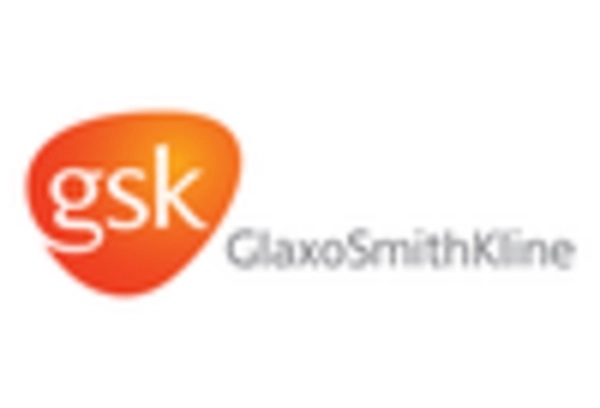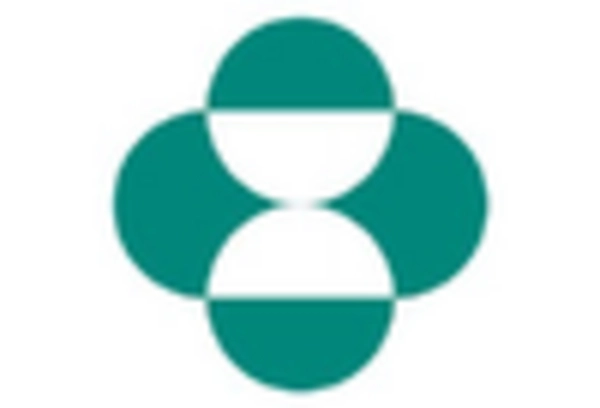Increase in Healthcare Expenditure
The increase in healthcare expenditure is a significant driver for the Acute Viral Rhinosinusitis Treatment Market. As countries allocate more resources to healthcare, there is a corresponding rise in the availability and accessibility of treatment options for patients suffering from Acute Viral Rhinosinusitis. Data suggests that healthcare spending has been on an upward trajectory, with many regions investing in advanced medical technologies and treatment protocols. This financial commitment enables healthcare facilities to offer a wider range of therapeutic options, including innovative medications and supportive care. Additionally, increased funding for public health initiatives aimed at respiratory illnesses further supports the market. Consequently, this trend is likely to enhance patient access to effective treatments, thereby fostering market growth and improving overall health outcomes.
Shift Towards Preventive Healthcare
The shift towards preventive healthcare is emerging as a significant driver for the Acute Viral Rhinosinusitis Treatment Market. As individuals become more health-conscious, there is a growing emphasis on preventing illnesses before they occur. This trend is reflected in the increasing adoption of preventive measures, such as vaccinations and lifestyle modifications, aimed at reducing the risk of respiratory infections. Public health campaigns promoting hygiene practices and awareness about respiratory health are gaining traction, which may lead to a decrease in the incidence of Acute Viral Rhinosinusitis. Consequently, this preventive approach is likely to influence treatment patterns, as healthcare providers focus on educating patients about symptom management and early intervention strategies. The overall impact of this shift could reshape the market landscape, fostering a more proactive approach to respiratory health.
Advancements in Pharmaceutical Research
Advancements in pharmaceutical research are significantly influencing the Acute Viral Rhinosinusitis Treatment Market. Continuous innovation in drug development has led to the introduction of new therapeutic agents that target the underlying viral causes of rhinosinusitis. Recent studies indicate that novel antiviral medications and combination therapies are being explored, which may enhance treatment efficacy. The market is witnessing a surge in clinical trials aimed at evaluating the effectiveness of these new treatments, which could potentially reshape standard care practices. Moreover, the integration of technology in drug formulation and delivery systems is likely to improve patient compliance and outcomes. As a result, the ongoing research and development efforts are expected to propel market growth, catering to the evolving needs of patients and healthcare providers alike.
Rising Incidence of Respiratory Infections
The rising incidence of respiratory infections is a crucial factor driving the Acute Viral Rhinosinusitis Treatment Market. With environmental changes and increased exposure to pathogens, the frequency of respiratory infections, including Acute Viral Rhinosinusitis, has escalated. Epidemiological data indicates that respiratory infections are among the leading causes of morbidity worldwide, leading to a heightened demand for effective treatment solutions. This trend is particularly evident during seasonal peaks, where healthcare systems experience surges in patient visits related to respiratory symptoms. As a result, healthcare providers are increasingly focusing on developing and promoting treatment options tailored to manage these infections. The growing burden of respiratory diseases is likely to stimulate market growth, as patients seek timely and effective interventions to alleviate their symptoms.
Growing Awareness of Acute Viral Rhinosinusitis
The increasing awareness regarding Acute Viral Rhinosinusitis is a pivotal driver for the Acute Viral Rhinosinusitis Treatment Market. As healthcare education improves, patients are more informed about the symptoms and treatment options available. This heightened awareness leads to earlier diagnosis and treatment, which is crucial for effective management. According to recent data, the prevalence of Acute Viral Rhinosinusitis is estimated to affect millions annually, prompting healthcare providers to focus on effective treatment strategies. Consequently, this awareness drives demand for various treatment modalities, including over-the-counter medications and prescription therapies, thereby expanding the market. Furthermore, educational campaigns by health organizations contribute to this trend, emphasizing the importance of recognizing symptoms and seeking timely medical advice.

















Leave a Comment